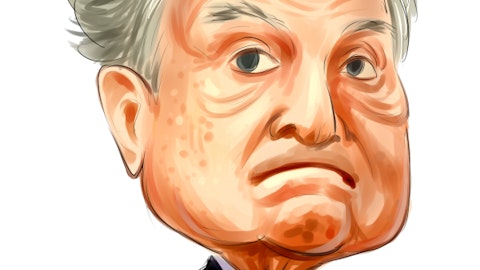Aengus Kelly: Well, I mean, they all vary, of course, and I’m not trying to be evasive. A new aircraft lease on day one, of course, that’s when you have your smallest margin because the capital cost, the debt attributed to it at a very high level. I would say at the moment, though, for aircraft — new aircraft that we’re leasing or aircraft that we’re extending, both of them are seeing the same type of rental — of upward rental pressure. I wouldn’t say you differentiate much between the two, where we held back quite a number of aircraft to lease. And you saw that we did some large transactions were announced recently on new technology assets and similar on the extensions across the board, you will see the same levels, as I said.
Vincent Caintic: Great. That’s helpful. And then just a second quick question on the guidance. So for the $9.50 doesn’t include any implied fourth quarter gains, but if you could talk about the pipeline, I think I heard $2.5 billion to $3 billion of sales of that number came up and is the recent trend of over 20% gain on sale margin. Is that continued to be achievable going forward?
Pete Juhas: Sure. So first, in terms of the volume, we have about $420 million of assets held for sale at the end of September. And so as I said, I think it will be somewhere between 2.5% and 3% for the full year, depending on when some of those close. In terms of the gain on sale margins, if you look back at the kind of long history of the Company, I mean, every year, basically, we have generated gains of typically, those have been in the range of 8% to 10%. If you look back over the last 15 years, obviously, this year, they’ve been running at higher levels, and I think that’s a function — it’s a function of three things, really, Vincent. It’s a function of the environment where we see the strong demand that Gus has mentioned across the board, whether that’s for leasing or for sales, but it’s also a function of the assets that we’re selling and the buyers.
And I think in terms of the assets that we are selling, this quarter, they tended to be a little bit older, on average about 17 years old. So that can push up the margin in some cases. But overall, I’d say we would expect to continue to run at kind of levels that are above historical ones.
Aengus Kelly: And it’s just as Pete said, there historically for the last 15 years, you’re running at circa 10% gain on sale margin. But that gain, I’d say, on an equity basis, on a levered equity basis, is about 133% of our book equity.
Operator: We’ll take our next question from Jordan Lyonnais with Bank of America.
Jordan Lyonnais: Good afternoon. I just had a quick question on the lease extensions. Are you guys seeing any differences in the 80% affecting the age of the fleet that could be released? And then also to — on those older ones, is there still a strong market for selling that?
Aengus Kelly: Yes. And I mean, look, there’s — it’s across the board. You’re not really extending younger aircraft, to be honest. I mean the youngest aircraft that will come off at least to be 12 years old. So the majority of what we’re extending it into the teens in terms of age. So it’s pretty much across the board. And as you’ve seen, we sold a lot of assets during the quarter made predominantly older aircraft. As has been the case for the last 15 years, most of what we sell is older than the average age of the book. And I don’t see that changing much as we go forward, as I’ve referenced in prior quarters. And to my earlier comments on this call, the airlines know there is going to be delayed for years and years into the future.
That’s why the extensions are so long dated in nature. And also why so many of our sales of aircraft over the last 12 months have been to airlines, and though average age of those aircraft getting sold to the airlines is over 15 years of age. So they know that this isn’t just a one- or two-year problem. As I said before, if it was that they would just be asking me and paying up for short-term extensions, but they know that’s not the case.
Operator: This does conclude the question-and-answer session. I will now turn the call back over to Gus.
Aengus Kelly: Thank you, operator, and thank you all for joining the call. This was our record quarter in our history for earnings. During the year, we’ve had a record level of buybacks. With the new authorization, we’ll have bought back almost 20% of the business. As I mentioned, we’ve been in the 99% on the S&P 500 for buybacks. And vitally, we did that without borrowing money. In fact, AerCap delevered while it did it and also grew its balance sheet the large overhang that we faced at the beginning of the year from GE with a 46% stake is now down at 14%. And so, as we look forward with the challenges facing the supply chain in the industry and our own position as being the largest marginal supplier of aircraft and engines in the world, we feel very positive about the outlook for the Company in the long term. Thank you very much, operator, and thank you for joining us.
Operator: This does conclude today’s presentation. You may now disconnect.
Follow Aercap Holdings N.v. (NYSE:AER)
Follow Aercap Holdings N.v. (NYSE:AER)
Receive real-time insider trading and news alerts



